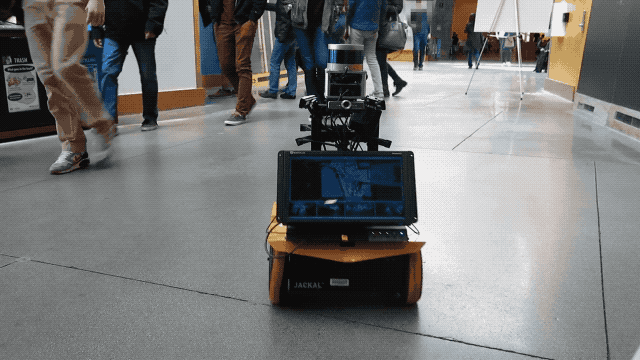Robots have a lot of challenges remaining before they become commonplace in our lives, and many of those are likely not even something you’d think about when trying to make a list. One good example is simply walking around among people, and keeping pace with pedestrians on streets and sidewalks. MIT engineers have created a new autonomous robot that can do exactly that, however, in a way that doesn’t impede or inconvenience the people it’s walking alongside.
Why is this important? Because future robots employed in service roles will have to navigate densely populated spots with a lot of foot traffic, including hospitals, malls, neighborhoods and campuses. That’s why an MIT team led by MIT researcher Yu Fan “Steven” Chen set out to create a robot that can move around completely on its own using “socially aware navigation” – in other words, following the unspoken social codes we all unconsciously observe when moving around together in shared space.
The robot itself is not humanoid, but is instead just a few feet tall with wheels. It’s designed to resemble what eventual mobile service kiosks and delivery robots might look like, and it includes a LiDAR array on top for high-resolution environment sensing. The robot uses webcams, too, for visual input, and a depth sensor, and it makes use of machine learning to deal with both a requirement to be continually moving, while at the same time dealing with the highly unpredictable movement of people moving around in crowds.
In tests, the robot proved able to drive on its own for up to 20 minutes at a time, smoothly navigating actual pedestrian groups without any collisions. This is key if we’re ever to actually have service robots interacting with us in the real world, the way you often see them depicted in fictional worlds like the Star Wars cinematic universe.
Just navigating pedestrian situations is tough enough, but what this project specifically sought to do was to accomplish this in a way that also left people around the robot feeling comfortable with its presence. Social norms are a huge, powerful unspoken element of interpersonal interaction, which you’ll recognize if you’ve ever tried walking down the street in a different part of the world where the unspoken codes of conduct might be subtly different.
MIT’s socially aware robot could be a big step towards workable real-life service bots, which is something research funder Ford and other automakers are very interested in.
